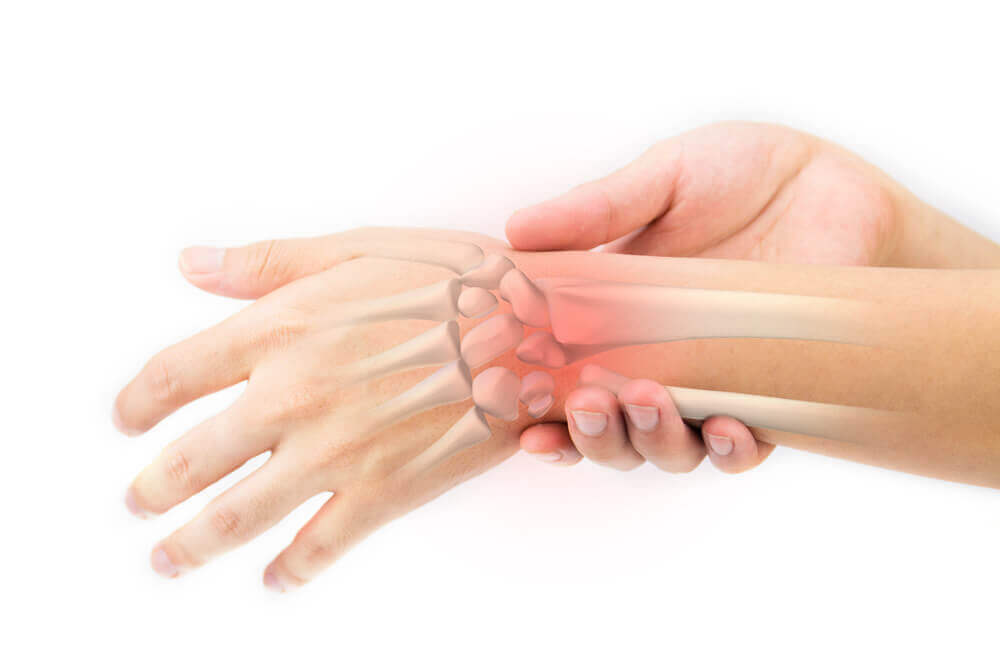The Functions of Vitamin D


Written and verified by the nutritionist Anna Vilarrasa
Vitamin D benefits the body in many ways. In fact, vitamin D acts as a hormone. This is why it performs important functions in the human body. Unlike many other vitamins, vitamin D can be endogenously synthesized.
Vitamin D receptors are present in more than 50 different tissues and play a role in the regulation of more than 200 genes. This makes it a key vitamin for staying healthy. This vitamin is comprised of fat-soluble compounds. There’s ergocalciferol (D2) and cholecalciferol (D3).
The functions of vitamin D and its role in health
According to information published in the International Journal for Vitamin and Nutrition Research, the most important functions of vitamin D are the following. Overall, this vitamin:
- Helps maintain calcium and phosphorus balance.
- Increases calcium absorption from the intestine.
- Plays a role in cell development.
- Is a powerful modulator of the immune system.
- Plays a role in the transmission of nerve impulses to the muscle.
There’s a clear relationship between the functions of vitamin D and bone health. A severe deficiency can manifest itself as rickets in children or osteomalacia in adults.
Although these conditions aren’t common nowadays, osteoporosis is increasingly prevalent. Normal vitamin D levels can prevent the development of this disease that weakens bones and increases the risk of fractures.
However, in recent years, researchers have studied its role in other health aspects.
More and more is known about its possible role in the development of autoimmune diseases (lupus, rheumatoid arthritis, or multiple sclerosis), high blood pressure, cardiovascular diseases, and some types of cancer. A study published in the journal Portuguese Medical Act stated this.

Vitamin D deficiency
Vitamin D deficiency is a major global public health problem. Due to the important functions of this vitamin in the body, we simply can’t underestimate the consequences of this situation.
The main cause of this deficiency is a lack of sun exposure. As you’ll see below, this is the main way to get vitamin D. On the other hand, some conditions can increase the risk of developing vitamin D deficiency:
- Malabsorption syndrome, which are disorders that make it hard for the small intestine to absorb enough of certain nutrients and fluids. For example, this includes Crohn’s disease or celiac disease.
- Kidney or liver disorders: The body needs to convert vitamin D into an active form. For this to occur, these organs need to work properly.
- Age
- Some medications reduce vitamin D absorption.
- Low sun exposure
- People with dark skin
- Obesity
Read more here: Calcium and Vitamin D-Rich Foods to Care for Your Bone Health
The main sources of vitamin D
To be able to take advantage of the benefits of this vitamin, it’s important to know the sources that allow you to ensure normal levels. There are two ways to achieve this: through food and skin synthesis.
Vitamin D in foods
Not many foods contain this vitamin, and the ones that do are consumed sparingly (such as organ meats or butter). The foods that are richest in this vitamin are:
- Fatty fish. Herring, mackerel, sardines, tuna, and salmon.
- Liver and other organ meats, also in pâtés and foie gras.
- Fatty cheeses and butter.
- Eggs. Egg yolks contain Vitamin D.
- Mushrooms
- Fortified foods. Foods enriched in vitamins and minerals are becoming more common. In this case, some types of milk, vegetable drinks, juices, or breakfast cereals are enriched with vitamin D.

Skin synthesis and sunlight
This is the source that provides your body with the most vitamin D. Solar ultraviolet radiation stimulates vitamin D3 production in the epidermis.
According to current scientific studies, five to 15 minutes of direct sun exposure on the face and arms is enough to prevent vitamin D deficiency.
However, some factors can hinder this synthesis:
- As we get older, we lose the ability to synthesize vitamin D.
- The darker your skin, the more you need to expose yourself to the sun.
- Sun protection factors greater than eight make it difficult for the sun’s rays to penetrate the skin.
- The intensity of sunlight: It isn’t the same during the winter as it is during the summer, nor in all regions.
Discover more here: Is Vitamin D the Key to Muscle Function?
While you need to expose yourself to the sun regularly to ensure normal vitamin D levels, you also need to be aware of the risks this entails. The ones that stand out the most are skin cancer and early aging.
Therefore, it’s important to follow expert advice when it comes to exposing yourself to the sun.
Vitamin D: An essential nutrient
Blood tests can detect a vitamin D deficiency. This is the best way to discover if you need to take a supplement or not.
Always follow your doctor’s recommendations when you expose yourself to the sun and eat foods rich in vitamin D to prevent a deficiency.
All cited sources were thoroughly reviewed by our team to ensure their quality, reliability, currency, and validity. The bibliography of this article was considered reliable and of academic or scientific accuracy.
- Stöcklin, E., & Eggersdorfer, M. (2013). Vitamin D, an essential nutrient with versatile functions in nearly all organs. International Journal for Vitamin and Nutrition Research, 83(2), 92–100. https://doi.org/10.1024/0300-9831/a000151
- Religi A., Backes C., Chatelan A., Bulliard JL., et al., Estimation of exposure durations for vitamin D production and sunburn risk in Switzerland. J Expo Sci Environ Epidemiol, 2019. 29 (6): 742-752
- Cardoso AT., Nanji L., Costa J., Vaz Carneiro A., Analysis of the cochrane review: vitamin D supplementation for prevention of cancer in adults. Acta Med Port, 2014. 27 (4): 411-3.
This text is provided for informational purposes only and does not replace consultation with a professional. If in doubt, consult your specialist.








